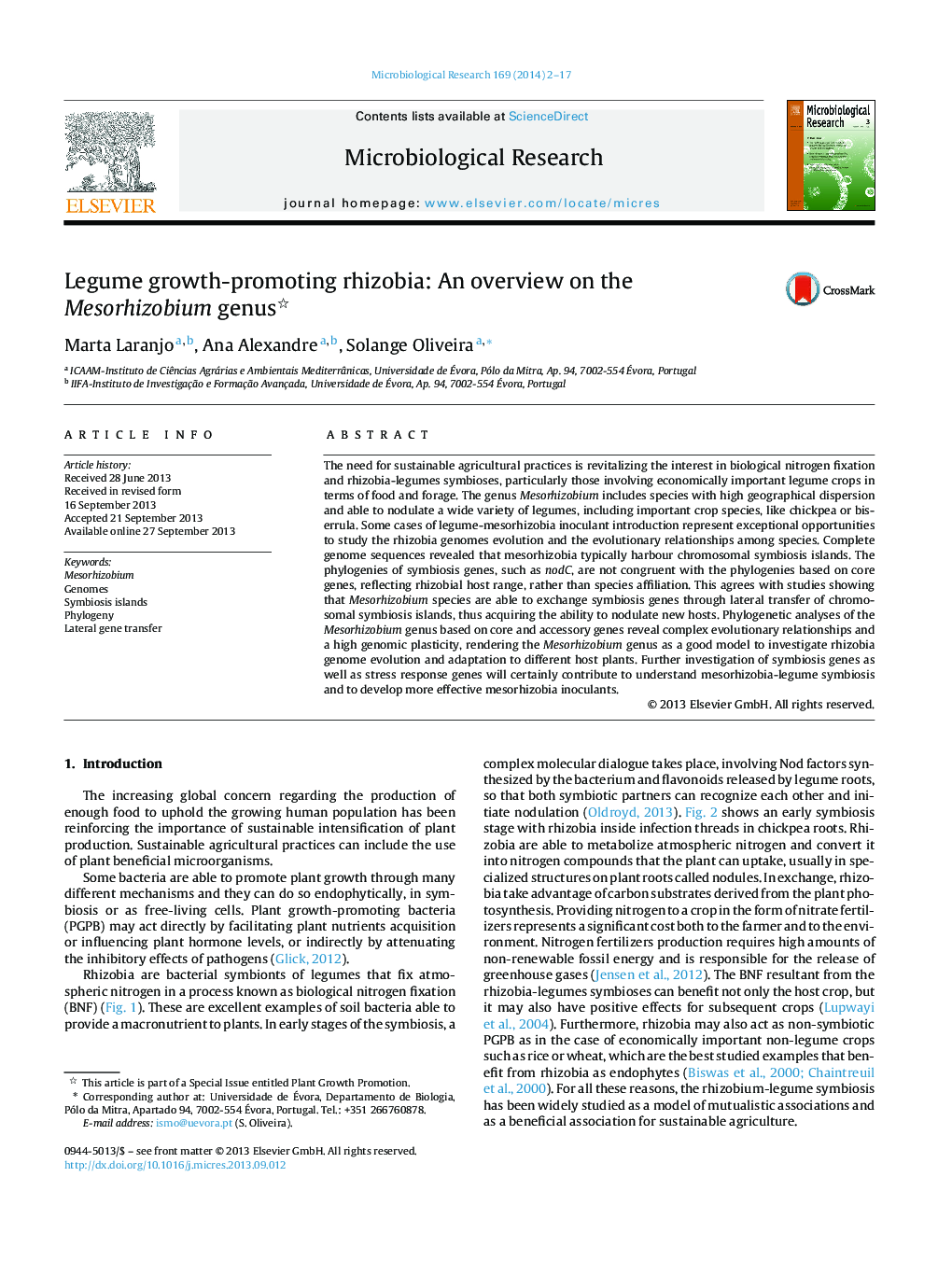| کد مقاله | کد نشریه | سال انتشار | مقاله انگلیسی | نسخه تمام متن |
|---|---|---|---|---|
| 2092294 | 1081780 | 2014 | 16 صفحه PDF | دانلود رایگان |

The need for sustainable agricultural practices is revitalizing the interest in biological nitrogen fixation and rhizobia-legumes symbioses, particularly those involving economically important legume crops in terms of food and forage. The genus Mesorhizobium includes species with high geographical dispersion and able to nodulate a wide variety of legumes, including important crop species, like chickpea or biserrula. Some cases of legume-mesorhizobia inoculant introduction represent exceptional opportunities to study the rhizobia genomes evolution and the evolutionary relationships among species. Complete genome sequences revealed that mesorhizobia typically harbour chromosomal symbiosis islands. The phylogenies of symbiosis genes, such as nodC, are not congruent with the phylogenies based on core genes, reflecting rhizobial host range, rather than species affiliation. This agrees with studies showing that Mesorhizobium species are able to exchange symbiosis genes through lateral transfer of chromosomal symbiosis islands, thus acquiring the ability to nodulate new hosts. Phylogenetic analyses of the Mesorhizobium genus based on core and accessory genes reveal complex evolutionary relationships and a high genomic plasticity, rendering the Mesorhizobium genus as a good model to investigate rhizobia genome evolution and adaptation to different host plants. Further investigation of symbiosis genes as well as stress response genes will certainly contribute to understand mesorhizobia-legume symbiosis and to develop more effective mesorhizobia inoculants.
Journal: Microbiological Research - Volume 169, Issue 1, 20 January 2014, Pages 2–17